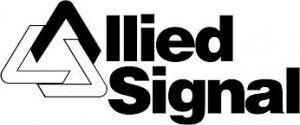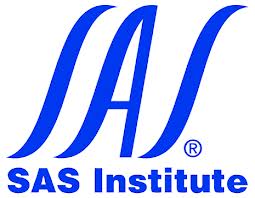Case Studies of Executives Creating Change
Our 1999 conference on The Role of Senior Business Leaders in Creating and Sustaining Work/Life Change resulted in the publication of four case studies of executives helping employees align their actions and values in the International Journal of Leadership Education.
They have been listed on the Aspen Institute’s Web site and sent in response to inquiries from hundreds of educators, students, and researchers from around the world. The cases, along with an introductory article, are each cited below and are accompanied by detailed summaries.
Friedman, S.D., 2005. Four studies of executives helping employees align their actions and values. International Journal of Leadership Education, 1: 29 – 30.
Lobel, S., 2005, Allied Signal: A case study on the role of senior business leaders in driving work/life cultural change. International Journal of Leadership Education, 1: 31 – 64.

The Allied Signal case revolves around a leader’s ability to integrate an unyielding demand for bottom-line results with a focus on the whole person. How does Sandra Beach Lin “walk the talk”? How do others reflect her style? What has she been able to achieve using this approach?
Since 1993, Allied Signal has developed a wide range of work/life programs and policies to support employees. Allied Signal recently received an award from the National Council of Women for Family Friendly program recognizing its contributions to the advancement of women in corporate America. From 1995 to 1997, employee satisfaction with benefits increased from 50 percent to 63 percent, corporate-wide.
Allied Signal’s CEO, Leo Bossidy, joined the company in 1991. He earned a reputation as a hard-driving leader who places a “stretch” on top of the goals that people set for themselves. Headlines about Bossidy in the popular press read “Larry Bossidy won’t stop pushing” and “Tough guy.” Allied Signal had 29 quarters of greater than 13 percent net income growth, which validates Bossidy’s approach.
The case site is the Specialty Wax & Additives group, one of four Strategic Business Enterprises (SBE) within the Specialty Chemical Strategic Business Unit (SBU) at Allied Signal. Sandy Lin is vice president and general manager of the Specialty Wax & Additives group, with 800 employees.
Despite her short tenure of 18 months at Allied Signal, Sandy Lin has come to be known as a leader who inspires her direct reports to accomplish stretch goals without compromising important aspects of life outside of work. Says one of her direct reports, “Sandy sees everyone in the business as more than just a business person. While demands for performance are very high, she is comfortable with formulating a personal process for meeting the various demands…When she talks to you, she is interested in what’s happening in your life, beyond your contributions to Allied Signal. Other leaders say that this is their approach, and yet when it comes down to it, there is very little sensitivity about meeting home responsibility in addition to office responsibility.”
The case presents elements from conversations with Sandy’s senior manager, her direct line and staff reports, and a focus group of employees. These conversations provide insights into how others see Sandy’s unique style and how it has affected their performance and morale. Individuals describe changes in the culture of Specialty Wax, although they acknowledge that there is still much room for improvement. Sandy’s style, at this point, is not a catalyst for change outside of Specialty Wax. If she successfully meets her challenging performance goals, others within the broader company may become curious about how she was able to do so.
Friedman, S. D., Thompson, C., Carpenter, M. and Marcel, D., 2005. Proving Leo Durocher wrong: driving work/life change at Ernst & Young. International Journal of Leadership Education, 1: 65-92.

Ernst & Young, LLP (E&Y), one of the “Big 5” accounting and consulting firms in the United States, has invested heavily over the last several years in the transformation of the organization and its culture to make it more supportive of life beyond work. The tight labor market for talented professionals in accounting and consulting has driven firms competing in these fields not only to create work environments that attract the best and the brightest, but also to ensure retention of existing employees.
Chairman and CEO Phil Laskaway led the way. He demonstrates tremendous support of life balance and other retention-related initiatives. Through his personal leadership and frequently stated position that “people issues” are the top priority for the remainder of his tenure in office, he has personally advanced the cause of retention and life balance, and engaged other senior leaders to do the same.
Laskaway created the Office for Retention (OFR) to improve opportunities for women and life balance for both men and women. The OFR’s director, Deborah Holmes, reports directly to the chairman. Since its inception, the OFR has worked with people at all levels of the firm to develop new approaches to addressing the life balance challenges. The OFR developed life balance prototypes in partnership with leaders and staff in several of the firm’s practice areas and capture their best practices.
The case describes two of the main prototypes, including the innovative work/life practices tried in them (e.g., revising the structure of the work week, openly discussing work/life considerations with clients and restructuring the nature of the consultant-client relationship, requiring explicit dialogue about work/life issues in account teams, and more). The case also discusses E&Y’s “Life Balance Matrix,” created by the OFR by leveraging the firm’s approach to knowledge management and information technology. The Life Balance Matrix is a Lotus Notes database that serves as a dynamic repository for E&Y’s life balance tools.
The case discusses the OFR’s partnering with E&Y’s Consulting Services practice to implement the Life Balance Matrix on various accounts through the Account-Centric Retention Initiative (ACRI). The ACRI is an effort to bring to the account level a dedicated focus on continually retaining the best talent in the field.
Bankert, E., Lee, M. E., and Lange, C., 2005. SAS Institute: A case study on the role of senior business leaders in driving work/life cultural change. International Journal of Leadership Education, 1: 93 – 114.

SAS Institute is the world’s largest privately held software company, with sales in 1998 of $870 million – double its revenue only six years earlier. In 1999, they exceeded $1 billion. Founded in 1976, the company makes statistical analysis software that it leases to a widely diverse group of customers. The company’s customer base has grown from 100 customers in 1976 to more than 30,000 in twelve countries, including all but two of the largest U.S. public companies. SAS Institute has 5,400 employees; 3,400 are at the company’s campus headquarters in Cary, North Carolina. John Goodnight, SAS Institute’s founders and CEO, owns two-thirds of the company, while John Sall, a senior vice president, owns the other third.
In recent years, SAS Institute has received considerable media attention for the “utopian” environment for which it has become known. The company’s physical surroundings are country club-like, and include two childcare centers, a fully staffed health center, private offices for all, a pianist in the company-subsidized cafeteria, state-of-the-art athletic facilities, and many other perks.
In terms of noteworthy non-tangibles, the company offers unlimited employee sick days and a 35-hour workweek. What’s not available is perhaps even more telling: there is no executive dining room, no reserved parking spaces (except for company vans), and no coveted offices for executives.
The compelling case story behind SAS Institute is not tied to a specific change initiative or the many perks, but is about the work environment created at the company’s outset and sustained over time. The case focuses on capturing the essential elements that define the SAS Institute culture: employee-centered values, employee interdependence, a spirit of risk-taking, freedom, challenging work, richness of resources, and the company’s physical surrounding.
In describing the background and motivation for creating this type of environment, the case explores issues related to Goodnight’s own value system and philosophy of work. In the section on maintaining the work environment, the case describes four strategies that have been initiated to support the company culture. These include a “hire hard” recruitment strategy, the 35-hour workweek, employee and manager surveys, and the compensation system. The case also presents the results from the company’s internal surveys, as well as specific employee data from the business press.
Siegel, P. 2005. Seagate Technology: A case study on the role of senior business leaders in driving work/life cultural change. International Journal of Leadership Education, 1:115 – 158.
![]()
Seagate Technology, Inc. designs, manufactures, and markets products for storage, retrieval, and management of data computer and data communications systems. The company has 85,000 employees located around the world. The case is centered on the Enterprise Storage Group (ESG), a business segment that comprises roughly 40 percent of Seagate’s total annual sales and specializes in the design, manufacturing, and the marketing of ultra high performance disc drives.
Beginning in early 1998, Seagate shifted to a team-based work environment that involved redesigning the organization into core teams. CEO Steve Luczo and CTO Tom Porter characterized the core team restructuring as necessary to ensure the company’s time-to-market (TTM) leadership, continued product performance, competitive advantage, and profitability. As of January 1999, there were a total of 17 core teams in operation at Seagate sites in Minnesota, Colorado, Oklahoma, and Singapore.
With major changes underway at Seagate, John Weyandt, the senior vice president in charge of ESG, articulated his business objectives as a faster time to market, and employee work/life balance.
The case looks at the core team change initiative in the context of achieving employee work/life balance. In particular, the case examines: the role of key individuals in mananging the change process; initial outcomes with respect to the TTM objective: initial outcomes with respect to the work/life balance objective; and remaining challenges as Seagate continues to manage the change process.
Several players are part of the case. Key change agents are Esther Williams (manager, Corporate Benefits) and Sue Eklund (in charge of Training, Organizational Learning, and Development for Seagate’s Twin Cities Operations (TCO)), who have been indispensable in their roles as champions of change. They have been the energy force that has focused TCO and the ESG on the importance of work/life issues. Their success in getting both senior leaders and grassroots employees to embrace work/life balance as an important business objective is, in part, a function of their dogged persistence in dialoguing with individuals to the point that “when they start thinking differently, they act differently.”
Key players from Seagate’s senior leadership include Tom Porter, who champions work/life by providing financial resources for various work/life initiatives and related programs, making himself available to speak with Esther and Sue on work/life issues, and being supportive and accommodating of his employees’ needs. While an “enabler” and motivator, he views work/life balance as a byproduct of TTM rather than a means to an end. Another key senior leader, John Weyandt, has made a visible commitment to work/life balance by stating this up-front at a meeting with the CEO and other corporate executives. As a leader of change, he demonstrates the importance of work/life balance by walking the talk.
